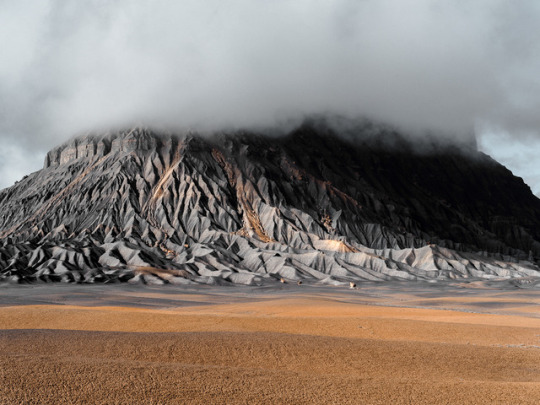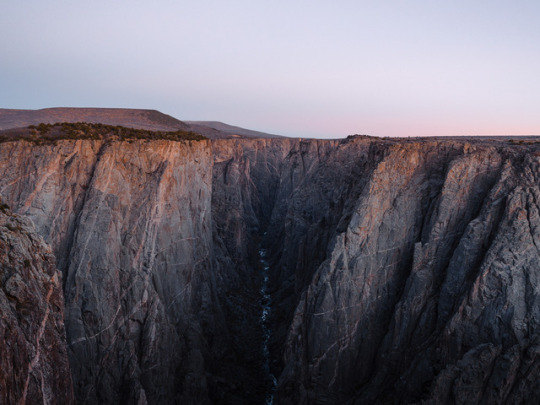Photo



Nothing like the comfort of having your own chaiselongue to lay down after work. STUA Costura chaise can be change of side according to your space needs.
COSTURA: www.stua.com/design/costura
USA: www.dwr.com/stua
A Jon Gasca design
197 notes
·
View notes
Photo

Three dead partisans hanging from a tree after being executed by German forces. The sign hanging on one of the victims says: “We are partisans and have shot at German soldiers” in both German and Russian. Minsk, 26th of October 1941
via reddit
401 notes
·
View notes
Photo

When introduced in the late 1990s, the MP3 audio encoding format generated a whole revolution by breaking the domain of physical CDs: it reduced the size of audio files by up to 95%, allowing listeners to carry a huge Amount of music in new small pocket devices that accompanied his release.
But in the 2000s, as is often the case in music, MP3 was slowly usurped by newer, more powerful formats, now used almost ubiquitously in streaming services and other modern platforms. Now, after almost two decades, the Fraunhofer Institute of Integrated Circuits, the German research body that owns MP3 rights, has decided not to renew its patents and “burial” the format forever.
IT’S THE END… It’s official: the MP3 format is dead. Companies terminate licensing
O Instituto Fraunhofer de Circuitos Integrados (Fraunhofer IIS) criador do MP3 parou de apostar no formato de áudio. Depois de mudar completamente a forma como partilhamos e ouvimos músicas, o Instituto anunciou que não irá mais renovar a licença de codificação do formato.
Foi durante o final dos anos 80 e início da década de 90 que o Fraunhofer IIS criou o MP3, o formato digital mais utilizado para comprimir, guardar e ouvir música. Ao fim de quase 30 anos, a empresa decidiu parar o licenciamento deste formato.
“A argumentação central do instituto é que o MP3 não é a melhor opção de áudio para 2017. Em comunicado, a organização afirma que outros formatos, como o “AAC”, são superiores em compressão, qualidade de som e são também mais versáteis. Os serviços de streaming, rádio e TV já utilizam outros formatos. O padrão para iPhone e iTunes, por exemplo, é o AAC”.
Apesar do licenciamento do MP3 estar a chegar ao fim, o uso cotidiano do formato não terá o mesmo fim, os arquivos com esse formato continuarão a ser reproduzidos como sempre, usando os aplicativos de reprodução.
1 note
·
View note
Photo

Carl Russell waves to his co-workers on the structural work of the 88th floor of the new Empire State Building, 1930.
via reddit
613 notes
·
View notes
Photo

WE DONTCARE ABOUT IDENTITIES
PH: MATEO MORENO
#dontcarebrand
21 notes
·
View notes
Photo

“I’m runnin’ wild with the one-eyed ones / I see no evil” – ’See No Evil’ (Tom Verlaine)
Richard Hell is one of the founding fathers of Punk Music. Born Richard Meyers in Kentucky, after dropping out of school he moved to New York with literary ambitions. In 1972 he formed the band ‘The Neon Boys’ with his schoolfriend Tom Miller and drummer Billy Ficca. The following year the band became 'Television’, with Meyers and Miller assuming the names Richard Hell and Tom Verlaine, and they recruited young guitarist Richard Lloyd.
Television discovered the legendary CBGB, the club out of which American Punk music developed, in 1974. During his time in Television, Hell also developed a unique look, wearing battered and torn clothing, which was the key visual inspiration for the Sex Pistols. He left Television in 1975 and joined former New York Dolls Johnny Thunders and Jerry Nolan in 'The Heartbreakers’ for a year, before forming his own band 'Richard Hell and The Voidoids’. After recording two albums, the band split, and Hell went into partial retirement, although since the late 1990s he’s returned to writing.
In this interview Hell discusses his various influences, Andy Warhol and pre-punk pioneers The Velvet Underground, watching The New York Dolls at Mercer Arts Centre, Television, CBGB, heroin, The Heartbreakers, The Voidoids, and the UK Punk scene.
It’s just one album. ‘Marquee Moon’ (1977) by U.S. punk rock band Television is their claim to a part in rock music history. They record other albums – but not many. They have greater commercial success – but still on an extremely limited scale. Few other bands are so remarkable yet have a reputation built on such a slim catalogue. But sometimes, one album is all it takes.
The central figure in the story of Television is Tom Verlaine.
Tom Verlaine is born Thomas Miller on 13 December 1949 in Mount Morris, New Jersey, U.S.A.
“I grew up taking piano lessons and liking [the classical music composer] Wagner when I was in second grade,” Tom Verlaine recalls. “I never set out to be a lead guitarist…When somebody turned me on to a [John] Coltrane record [Coltrane is a notable jazz saxophone player] around seventh grade, I took up saxophone.” Albert Ayler, another jazz great, is also influential on the youth. “I always hated jazz guitar,” says Tom Verlaine. “I loved jazz saxophone but I hated jazz guitar.” This is ironic since Verlaine will become famed for his guitar playing. The change to that instrument comes in his mid-teens. “I started messing around with songs, but I didn’t really like sitting at the piano singing, so I got a cheap guitar and realised it was very easy to play and a cool thing to write songs on.”
Tom Verlaine is raised in Wilmington, Delaware (some biographies even list that as his place of birth). He attends the Sanford School in Delaware, a private school with classes from junior kindergarten through to grade twelve. One of his classmates is Richard Myers who is later more colourfully known as Richard Hell. Although Richard only attends the Sanford School for a year, he and Tom are a mischievous double act. They run away together only to be arrested in Alabama for arson and vandalism a short time later. Even on his own, Tom proves a handful. He drops out of boarding school, leaves Wilmington, and hitch-hikes to Florida. He is returned by the police. As Tom Miller, he completes his education and, after a very brief time at Erskine College in South Carolina, he heads to New York City in 1968.
It is unclear when Tom Miller takes on the new identity of Tom Verlaine, but the most likely juncture is on his arrival in New York City in 1968. His school days’ misadventures as Tom Miller are behind him and he is free to reinvent himself. The surname Verlaine is borrowed from the French symbolist poet Paul Verlaine. It’s all very romantic, but the harsh economic reality of life in the big city means that Tom Verlaine finds himself earning a subsistence income as a banana packer / dispatcher.
The Neon Boys is Tom Verlaine’s first band in New York. This trio exists for some months in 1971 and consists of Tom Verlaine (vocals, guitar), Richard Hell (bass, vocals) and Billy Ficca (drums).
Richard Hell is born Richard Lester Myers on 2 October 1949 in Lexington, Kentucky. He attends the Sanford School in Delaware with Tom Verlaine. Richard Hell publishes Tom Verlaine’s poetry in a magazine run by Hell.
William Joseph ‘Billy’ Ficca is born 5 February 1950 in Delaware.
The Neon Boys fall apart when Billy Ficca leaves New York and heads off to Boston.
Tom Verlaine fitfully plays some solo gigs. At one of those shows, in the summer of 1973, the audience includes Richard Lloyd and his friend William Terry Ork.
Richard Lloyd is born 25 October 1951 in Pittsburgh, Pennsylvania. He becomes interested in playing piano when he is 3 or 4, but what really inspires Lloyd is the advent of the British pop phenomenon of the 1960s, The Beatles. Richard Lloyd goes on to attend the Stuyvesant High School in New York City, a facility that specialises in science courses. He lives in Boston for two years, then resides in Los Angeles from 1971 to 1973 and is characterised as ‘a west coast drifter.’
Richard Lloyd and Tom Verlaine talk about putting a band together, with Terry Ork acting as their manager. By this time, Billy Ficca has returned to New York City, so it is relatively simple for Tom Verlaine to recall his two confederates from The Neon Boys. The new four-piece act is christened Television and is founded in December 1973. The line-up is: Tom Verlaine (vocals, guitar), Richard Lloyd (guitar, vocals), Richard Hell (bass, vocals) and Billy Ficca (drums). Presumably, the band’s name is inspired by the initials of their leader, Tom Verlaine: TV. Richard Lloyd will later comment, “Can I just say that if you asked me, I’d say Television was a lousy f***in’ name for a rock group.”
Television rehearses at Terry Ork’s loft in New York. The group makes their live debut at the Townhouse Theater in March 1974. Tom Verlaine makes the acquaintance of Hilly Kristal who has ‘a run-down bar on the Bowery.’ This is C.B.G.B. (Country, Blue Grass and Blues). Verlaine convinces Kristal to let Television play at the venue. Their first show at C.B.G.B. is in March 1974. Television goes on to have a Sunday night residency at C.B.G.B. The group also plays at Max’s Kansas City, another New York venue. These places become the breeding ground for New York’s embryonic punk rock scene.
Another important performer in New York at the time is Patti Smith. A poet and writer turned rock singer, she and Tom Verlaine date in the 1970s. Having named himself after a symbolist poet and with some of his poetry published by his friend Richard Hell, Verlaine has some literary aspirations of his own. He writes a book of poetry in conjunction with Smith. She, presumably, also sees something attractive in his six foot, four inch, frame, his ‘thin, Messianic beauty.’ “The first time I met Patti Smith was in a Laundromat,” says Verlaine. “We knew some of the same people, including Richard Hell.” Verlaine plays guitar on Patti Smith’s first single, ‘Hey Joe’, in 1974. She describes his work this way: “Tom plays guitar like a thousand bluebirds screaming.”
In April 1975 Richard Hell is dropped from the line-up of Television. He works with Johnny Thunders (ex-New York Dolls) in a band called The Heartbreakers from May 1975 to July 1976. Following this, in 1976 he strikes out with his own band, Richard Hell And The Voidoids, who record two albums, ‘Blank Generation’ (1977) and ‘Destiny Street’ (1982). Abandoning The Voidoids, Hell records ‘R.I.P.’ (1984). He marries Patty Smyth of Scandal (no relation to Patti Smith, Tom Verlaine’s mid-1970s partner). The marriage lasts for two years, 1985-1986, and produces a daughter, Ruby. ‘Funhunt’ (1989) is a live recording. Following this, Richard Hell records the ‘Dim Stars’ (1992) album and the identically titled ‘Dim Stars’ EP also in 1992. Richard Hell rarely plays live in subsequent years, preferring spoken word performances, and leaves music behind. In 2002 he marries his second wife, Sheelagh Bevan.
Replacing Richard Hell in Television from May 1975 is Fred Smith (born 10 April 1948). Fred Smith is not to be confused with Fred ‘Sonic’ Smith of late 1960s Detroit rock band MC5, who later becomes romantically involved with Patti Smith after she and Tom Verlaine part ways. The Fred Smith who joins Television is a veteran of The Stilletos (October 1973-August 1974). He follows that band’s leading lights, Debbie Harry and Chris Stein, into the more famous Blondie, his stint with them running from August 1974 to May 1975. Blondie, like Television, are part of the New York punk scene. However, Smith justifies his changing groups this way: “Blondie was like a sinking ship and Television was my favourite band.”
Television prepare for their recording debut.
Television is normally categorised as a punk/new wave act. They certainly come up in the same class of mid-1970s New York acts that includes Patti Smith, The Ramones, Blondie and Talking Heads. What they all have in common is a desire to strip away a lot of the artifice that rock has accumulated and return to a purer, more primal and basic, sound. Tom Verlaine remains wary of the punk label: “We felt outside of that [punk rock movement]…Back then C.B.G.B.s was a s***ty club and the only place we could play.”
In trying to describe the sound of Television, the net is cast wider than for most punk/new wave bands. Firstly, there are classical influences like Wagner and Stravinsky for Tom Verlaine. Then Verlaine’s formative influences expanded to jazz musicians such as John Coltrane and Albert Ayler. “I probably never did listen to a lot of rock,” admits Verlaine. One artist he picks up on is 1960s folk rock titan Bob Dylan, but that may be as much to do with the lyrics as the music. Other folk rock acts such as The Byrds and Fairport Convention are referenced in an effort to encompass Television’s electric guitar sound as well. In the same spirit, late 1960s electric, acid-influenced post-folk acts including The Grateful Dead and Quicksilver Messenger Service are brought into the equation because of their guitar interplay. More instructive is a comparison to a New York band from the late 1960s, The Velvet Underground, who shares the later punk/new wave ethos of reducing rock to a minimal, artistic, brutishness.
The most important element in the sound of Television is the guitar interplay between Tom Verlaine and Richard Lloyd. Though Television is hardly the first rock band to have two guitarists, the way Verlaine and Lloyd intersect is virtually unprecedented. In extremely broad terms, Verlaine plays lead guitar to Lloyd’s rhythm guitar, but there is much more to their musical dialogue than such a description suggests. Part of it has to do with the individual idiosyncrasies of the duo. Richard Lloyd meticulously writes out the notes he will play while the more spontaneous Tom Verlaine has difficulty remembering exactly what notes he played when previously performing the same song. This fusion of structure and chaos gives Television strength. Without structure, their sound would collapse; without chaotic improvisation they may be dull. “I like the rhythm thing about guitar, much more than lead guitar,” claims Verlaine, who’s always fond of a contradiction. “The lead guitar just happened because it was the point in the song to play a solo and I would kind of rip something down, and it came out sounding different sometimes.”
Almost all of Television’s songs are written by Tom Verlaine. As his literary interests suggest, his lyrics are quite poetic in their imagery. What is less expected is that they are riddled with odd references that appear to be strange in-jokes, unintelligible to anyone other than the author. In both cases, they are intriguing and food for thought.
In October 1975 Television releases their first single on their manager Terry Ork’s customised Ork label. A seven minute Tom Verlaine composition, ‘Little Johnny Jewel’ (UK no. 30), is broken into Part 1 on the A side and Part 2 on the B side. A casual Tom Verlaine ‘claims they probably wouldn’t sell many of them anyway…[and its purpose is] documenting themselves for art’s sake.’ Although it is hardly a chart-busting smash, ‘Little Johnny Jewel’ sells in excess of two thousand copies. The song itself sounds positively unearthly. The mix is thin and tremulous. “Now Little Johnny Jewel / Oh, he’s so cool / He has no decision / He’s just trying to tell a vision,” sings Tom Verlaine, slipping in a pun on the band’s name of Television (tell a vision). “That [single] actually got a lot of press – I think ‘cause it was so weird,” says Verlaine.
Major record labels now court Television. In 1975 Brian Eno flies in from England to make a demo tape of Television for Island Records – but it is rejected. Television make demos themselves for Arista but ‘ultimately turn them down because the label doesn’t offer enough money.’ In winter 1975-1976 an audition for Atlantic Records leaves the executives too freaked out by the band’s unusual sound to sign Television. Finally, the group finds a home on Elektra Records in 1976. Andy Johns is selected as producer. He is the brother of Glyn Johns, another noted record producer. After some initial confusion about the sound the band wants – “A dry sound, no reverb, no compression – nice, tight, smaller kit,” according to Richard Lloyd – they all get along quite well.
‘Marquee Moon’ (1977) (UK no. 28) is released in February on Elektra Records. Production credit is shared between Andy Johns and Tom Verlaine. The cover image is a photocopy of Robert Mapplethorpe’s photo of the group with the colours distorted through over saturation. All the songs are written by Tom Verlaine with the exception of ‘Guiding Light’, a slow, 1950s ache, which he co-writes with Richard Lloyd. The nominal single is ‘Prove It’ (UK no. 25) which sounds like a cross between an insect call and a film noir soundtrack. Narrating like a private eye, Verlaine refers to “The docks / The clocks / A whisper woke him up.” The album opens with the tightly-woven guitar mesh of ‘See No Evil’, an anthem for the punk/new wave era: “Destructive urges…It seems so perfect…I see no evil.” ‘Venus’ is one of the oldest songs in Television’s repertoire. Richard Lloyd recalls seeing Tom Verlaine playing it at a solo gig back in 1973. The guitars chime lyrically on ‘Venus’. Bewilderingly, the song is set on a “tight toy night” – an inexplicable Verlaine-ism. Additionally, Verlaine wrong-foots listeners by pronouncing the last word of Venus de Milo as ‘MEE-low’ rather than the more common ‘MY-low’. In truth, both pronunciations are correct and acceptable. The Venus de Milo is an ancient Greek statue sculpted by Alexandros of Antioch between 130 and 100 B.C. It is believed to be a depiction of the Greek goddess of love, Aphrodite (or Venus, as the Romans renamed her). The statue survives only in damaged form, with the arms broken off. So when Tom Verlaine sings, “I fell right into the arms of Venus de Milo,” he means he fell into the arms of the goddess of love – except she doesn’t have any arms so, presumably, he is left to fall down. “The song ‘Venus de Milo’ [sic], the whole subject of it is love is a drug,” claims Tom Verlaine. Perhaps the best track in Television’s career is ‘Friction’. This song embodies a maddening impulse, an itch that can’t be scratched. ‘Friction’ combines Television’s greatest strengths. “Something comes tracking down / What is it, what’s the prediction? / I’ll betcha it’s friction,” confides Verlaine in the lyric. But the words also encompass his usual profundity (“I don’t wanna grow up / There’s too much contradiction”) and perplexing prose (“If I ever catch that ventriloquist / I’ll squeeze his head right into my fist”). Above all else, there are the guitars. Richard Lloyd’s steady riff is classic stuff but when Verlaine’s solo skitters down the fretboard like an expert skier executing a flawless slalom, it reaches some sort of apotheosis. ‘Marquee Moon’, the title track, is a more oblique piece. Its teasing tones are like blinking musical lights. The lyrics are more opaque than ever: “Life in the hive puckered up my night, the kiss of death, the embrace of life / There I stand ‘neath the Marquee Moon / Just waiting…” The luxuriant length of the track (10:47) is largely justified by its guitar solos, first from Lloyd, then from Verlaine. ‘Elevation’ has strangled vocals and throbbing guitars. Rounding out the disc is ‘Torn Curtain’, a gloomy, paranoid piece stalked by Verlaine’s serrated guitar. (Note: Later reissues of ‘Marquee Moon’ wisely include ‘Little Johnny Jewel’ as a bonus track, though it was not part of the album in its original configuration.) ‘Marquee Moon’ is, of course, Television’s best album. ‘They are one band in a million; the songs are some of the greatest ever,’ gushes one review. The album receives only a muted response in the U.S.A. but does better in England. “Everybody seemed to love the record over there right away,” notes Tom Verlaine. Time and history converge to expand the legend of ‘Marquee Moon’, making it a cult classic. Verlaine concludes, “Each one [of the songs] is like a little moment of discovery or releasing something or being in a certain time or place and having a certain understanding of something.”
Television begins a U.K. tour on 20 May 1977 as a support act to bassist Fred Smith’s former group, Blondie.
‘Adventure’ (1978) (UK no. 7) is the title of Television’s second album. Released in April, it is co-produced by John Jansen and Television. All the songs are written by Tom Verlaine with the exception of ‘Days’, which is co-written with fellow guitarist Richard Lloyd. ‘Foxhole’ (UK no. 36) is harder and heavier than previous Television songs. Chanting the title, Verlaine demands, “Foxhole, foxhole / Show me the war.” The unexpectedly bouncy ‘Careful’ has its title contradicted by its own lyrics: “I don’t care.” “When I see the glory / I ain’t gotta worry,” sings Verlaine in ‘Glory’, an angular track with dovetailing guitars. ‘Adventure’ has better U.S. sales than ‘Marquee Moon’ but the reputation of ‘Marquee Moon’ has come to comprehensively eclipse it. ‘Adventure’ is not the equal of ‘Marquee Moon’, but historically it may deserve reassessment since it is possibly underrated.
On 28 August 1978 Television disbands. The break-up is said to be ‘due to tensions between the two guitarists’, Tom Verlaine and Richard Lloyd.
Tom Verlaine records a series of solo albums. Former Television bassist Fred Smith plays on many of these discs. Verlaine’s albums are: ‘Tom Verlaine’ (1979); ‘Dreamtime’ (1981); ‘Words From The Front’ (1982); ‘Cover’ (1984), which – despite its title – does not consist of cover versions; ‘Flashlight’ (1987); and ‘The Wonder’ (1990).
Richard Lloyd also issues some solo albums: ‘Alchemy’ (1979), ‘Field Of Fire’ (1986) and ‘Real Time’ (1987).
From 1978 to 1984 Billy Ficca plays drums in a band called The Waitresses. Their first album, ‘Wasn’t Tomorrow Wonderful?’ (1982) (US no. 41) includes their best known song, ‘I Know What Boys Like’ (US no. 62). The group issues an EP in 1982, ‘I Could Rule The World If I Could Only Get The Parts’ (US no. 128); a second album, ‘Bruiseology’ (1983) (US no. 155); and a final EP, ‘Make The Weather’, in 1983.
Television reforms late in 1991 with all four members of the classic line-up of the band. They release a new album, ‘Television’ (1992), on Capitol Records. The album is produced by Television and all the songs are written by Tom Verlaine. ‘Mr Lee’ is released as a single. The group disbands again early in 1993.
Tom Verlaine issues ‘Warm And Cool’ (1992) and Richard Lloyd puts out ‘The Cover Doesn’t Matter’ (2001).
Television gets back together in 2001 for a handful of shows in the U.K. and the Noise Pop Festival in Chicago. After this, they never really disband again, but seem to only exist to revel in old glories.
Tom Verlaine releases two more solo albums, both in the same year, ‘Songs And Other Things’ (2006) and ‘Around’ (2006).
Richard Lloyd leaves Television in 2006. “He just quit,” says Tom Verlaine simply, “so we thought we’d find another guitar player.” Richard Lloyd resumes his solo career with ‘The Radiant Monkey’ (2007) and ‘The Jamie Neverts Story’ (2009).
Jimmy Rip replaces Richard Lloyd in Television from 2007 and the band continues to fitfully tour.
Television never made much commercial impact. “I really don’t have that much interest in stardom,” shrugged Tom Verlaine. The band’s reputation amongst the cognoscenti is huge. Yes, much of that reputation centres on ‘Marquee Moon’. It may only be one great album, but there are many bands who will never achieve so much. Television was ‘one of the most creative bands to emerge from New York’s punk scene of the mid-1970s, creating an influential new guitar vocabulary.’ Their work was based on ‘the cryptic electricity and strangled existentialism of guitarist Tom Verlaine’s voice and songwriting.’
9 notes
·
View notes
Photo

Hauling a log down a hill, Fresno County, CA, 1919.
via reddit
442 notes
·
View notes
Photo

West Ham - Sculpture For Football Songs 1998
Angela Bulloch
94 notes
·
View notes















